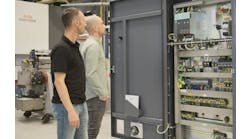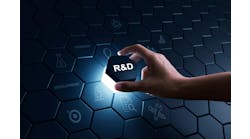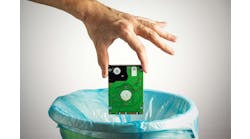Unified namespace encourages more dynamic control architectures
RoboDK celebrated its 10-year anniversary recently, and it served as a reminder that the automation industry is moving in the direction of a single controller to do the functionality of application control, safety, robot, computer numerical control (CNC), vision, and human-machine interface (HMI). Why? RoboDK was one of the first companies to allow simulation of robots in Python.
Now, the University of California Los Angeles (UCLA) has classes where young technologists learn to code robot frameworks in Java. Rockwell Automation has “unified robot control” where the application uses ControlLogix and Kinetix motion commands to control a robot. Beckhoff has integrated a Kuka interface into its controller. They are also working on their own robot. Schneider Electric has a robot to control from its controller.
Get your subscription to Control Design’s daily newsletter.
Imagine as a machine builder that you can reduce your hardware costs and your software costs by buying software suites and then also using fewer controllers to create your control architecture.
If one controller and one software package can do it all, then isn’t it more convenient?
This is the objective of open PLC logic. Imagine having the human-machine interface and the libraries for components in the PLC code. Then the architecture, power, communications, energy consumption, wiring and costs can shift to a software-integration capacity and use less wiring.
Thus, overall costs might not decrease, but complexity could. However, development time should decrease and wiring and real estate, as far as cabinet space, should be less.
What it means is that the software increases in complexity, and it becomes more imperative to modularize software into objects and create software interfaces to allow for the robot, controller and HMI functionality. This is where Unified Namespace (UNS) comes into play. Unified Namespace is a single source of truth for all data and information.
Read more of Tobey's recent articles here:
- 8 steps to the reverse-engineering process
- Why would a cobot need more sensors to provide a safe environment?
If we add an edge computer as the driving force and enable artificial intelligence (AI), then one can start to see how ladder logic might not be the best choice for the program. Not to mention that we are not quite there on all fronts, but we are closer.
For instance, the Rockwell unified robot control and FactoryTalk Optix software platform allow machine builders to simplify and design faster, which could make their customers happier. However, there is a learning curve to the environment and to understanding the object-oriented base that is required to develop the software. Like ladder logic though, every application must begin somewhere.
The advantages of reducing hardware and improving the power of the software by using edge computing and a better software architecture are huge.
The Industrial Internet of Things (IIoT) and Industry 4.0 are encouraging more dynamic architectures in the controls environment, so that we can advance forward with more authority, modularity and scalability. These are the benefits of the UNS, and it allows for one controller to be the master of the automation with however many subsets we want to duplicate.
In doing so, it could be looked at like local firmware for an application. The framework gets to be duplicated on each machine, and the inside of the software changes. This means reusable code and scalability becomes easier. The tough part is setting up a framework that is repeatable, that your programmers can follow and that the customer can troubleshoot.





